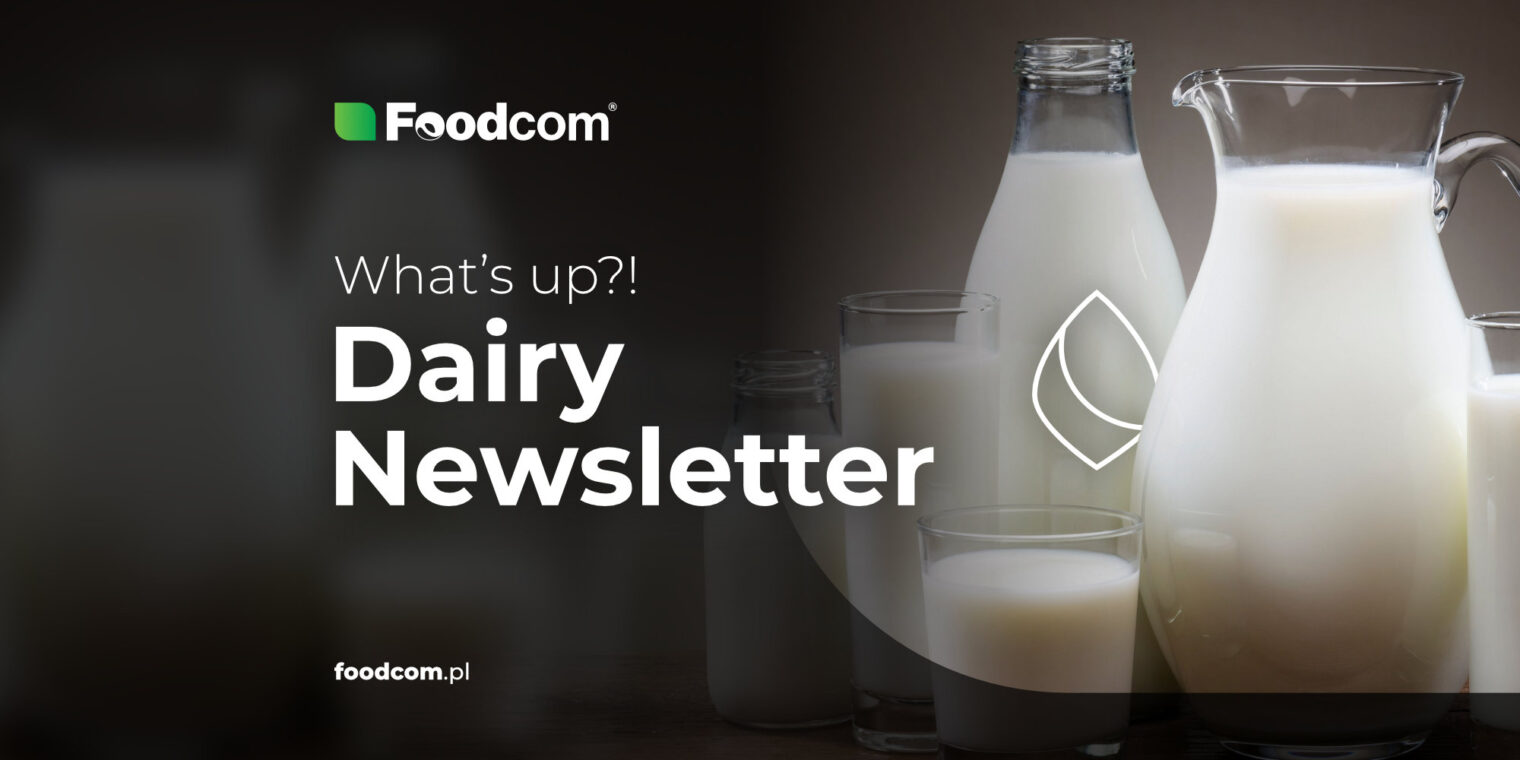Hello, Partners!
Welcome to this week’s Dairy Newsletter, where we dive right into the action-packed world of dairy markets! Last week, the Global Dairy Trade (GDT) tender took center stage, and the results were nothing short of sensational. Prices increased by a whopping 4.6%, rocking the industry and significantly increasing the cost of nearly all dairy products. Get ready to understand the impact of this remarkable development as we explore the latest trends and insights into the world of dairy.
Hottest Products of the Week
Whey Proteins
The real stars of the last few weeks have undoubtedly been whey proteins, especially WPC and WPI. These products have experienced a remarkable upward trend, driven by rapid demand that had resulted in ever-increasing price levels. The rising popularity and demand for these proteins have had a profound impact on market dynamics, leading to a sustained price increase.
Liquids
Cream shows remarkable strength and holds its own at a high level. This consistent performance in the cream market is certainly worth watching closely. Raw milk is making waves on the spot market and prices are approaching the 50-cent mark. The market has been very dynamic as demand and supply forces continue to influence this important commodity.
Cheeses
There is a clear upward trend in cheese prices that catches our immediate attention. Cheeses are holding their own across the board, with Mozzarella lagging slightly behind Gouda. The high demand for Gouda cheese makes it the frontrunner, while Cagliata also holds at a solid price level.
Butter
Butter prices have experienced a significant ascending trajectory, analogous to the development in cheese. This synchronous increase underscores a significant shift in the dairy market, as both butter and cheese prices are rising noticeably.
What else?
Europe & Africa
Ireland
‘Severe’ milk price cuts ‘will wipe €2bn’ from dairy farms’ revenues in 2023. The sharp decline in milk prices throughout this year is projected to result in a €2 billion reduction in dairy farmers’ revenues in 2023, potentially leading to a double-fold decrease in spending within rural communities, according to a recent analysis. This situation is expected to have a profound and lasting impact not only on dairy farmers themselves but also on the broader rural economy, stretching into 2024. The Irish Creamery Milk Suppliers Association (ICMSA) president, Pat McCormack, has urged Minister for Agriculture Charlie McConalogue to promptly convene a dairy forum meeting to establish a strategy aimed at revitalizing milk prices and supporting dairy farmers.
EU
Bovine coronavirus detected on most dairy farms in Europe. MSD Animal Health has released the results of the first field study assessing the prevalence of Bovine Coronavirus (BCoV) on dairy farms in Europe. The study found the presence of BCoV in the respiratory systems of animals on 73% of farms, which could have a significant impact on herd health and milk production. These findings underscore the need for further research into coronaviruses in animals and their potential implications for human health.
The Americas
USA
Butter, cheese demand supporting milk prices. U.S. milk production is expected to remain stagnant with a possible decline in cow numbers due to lower milk prices and high feed costs, according to Bob Cropp, a professor emeritus at the University of Wisconsin-Madison. Although recent milk prices have shown some strength, driven by higher cheese and milk prices, the overall outlook for dairy production remains uncertain. Despite increased domestic demand for cheese and butter, fluid milk sales are below year-ago levels, and dairy exports have been facing challenges due to weaker demand in Asia and heightened competition from Europe and New Zealand.
Brazil
CNA and Faesc demand support measures for milk and meat producers. The cattle and dairy market in Brazil has witnessed a sharp decline in milk and beef prices, adversely affecting profit margins and the ability of producers to meet financial commitments. In response, the Brazilian Confederation of Agriculture and Livestock (CNA) and the Federation of Agriculture and Livestock of the State of Santa Catarina (Faesc) propose the establishment of an emergency rural credit line and financial recovery measures to support affected farmers.
Asia & Oceania
Australia
Southeast Asia is a bright spot for dairy exporters of Australia and New Zealand. Rabobank identifies Southeast Asia as a promising market for dairy exporters from Australia and New Zealand amid a sluggish global economy. The report, “Southeast Asia – Transitioning to Better Times,” highlights the potential for growth in dairy markets in the Philippines, Malaysia, Thailand, Singapore, and Vietnam, offering positive prospects for exporters from Oceania. According to Rabobank this presents a favorable opportunity for Australian and New Zealand dairy exporters, who have traditionally played a significant role in supplying the region.
New Zealand
Fonterra posts massive profit. Dairy co-operative Fonterra has reported a nearly threefold increase in net profit for the full year, with a 12% growth in revenue. Despite weak farmgate milk prices, the company attributed this strong performance to the execution of its strategic priorities. Fonterra’s net profit for the 12 months ending in July was $1.58 billion, compared to $583 million the previous year, and its revenue increased to $26.05 billion from $23.4 billion. The company also noted improved performance in its foodservice and value-added ingredients channels, driven by increased product pricing and higher demand as lockdown restrictions eased in Greater China.








